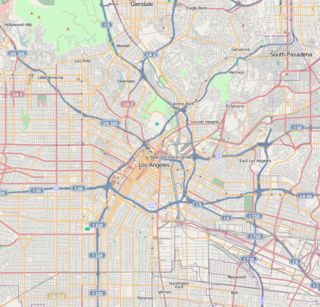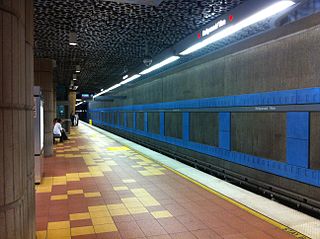This article appears to be a dictionary definition . |
Brouhaha is a French word sometimes used in English to describe an uproar or hubbub, a state of social agitation when a minor incident gets out of control. [1]
This article appears to be a dictionary definition . |
Brouhaha is a French word sometimes used in English to describe an uproar or hubbub, a state of social agitation when a minor incident gets out of control. [1]
Typically, a brouhaha is marked by controversy and fuss that can seem, afterwards, to have been pointless or irrational.
In one such instance, in New York City, a dispute between a clinic entitled Upper Breast Side (that gives advice to young mothers about breastfeeding and bras) and a condo association erupted into a legal battle and was described in The Boston Globe as a brouhaha and a 'storm in a D-cup'. [2] The Washington Post described an incident as a brouhaha in which a passenger, on board a jetliner, reclined the seat to the point where it bothered a second passenger, resulting in a fistfight, intervention by flight attendants, and the plane returning to the airport escorted by fighter jets. [3] An instance of politics surrounding the choice of bus lanes in Los Angeles was described as a brouhaha when ineffective squabbling erupted that ultimately did not help efforts to improve public transit in the metropolis. [4]

A bus is a road vehicle designed to carry many passengers. Buses can have a capacity as high as 300 passengers. The most common type is the single-deck rigid bus, with larger loads carried by double-decker and articulated buses, and smaller loads carried by midibuses and minibuses while coaches are used for longer-distance services. Many types of buses, such as city transit buses and inter-city coaches, charge a fare. Other types, such as elementary or secondary school buses or shuttle buses within a post-secondary education campus do not charge a fare. In many jurisdictions, bus drivers require a special licence above and beyond a regular driver's licence.

Light rail is a form of passenger urban rail transit characterized by a combination of tram and metro features. While its rolling stock is more similar to a traditional tram, it operates at a higher capacity and speed, and often on an exclusive right-of-way.

A high-occupancy vehicle lane is a restricted traffic lane reserved for the exclusive use of vehicles with a driver and one or more passengers, including carpools, vanpools, and transit buses. These restrictions may be only imposed during peak travel times or may apply at all times. According to the criteria used there are different types of lanes: temporary or permanent with concrete barriers; two-directional or reversible; and exclusive, concurrent or contraflow lanes working in peak periods. The normal minimum occupancy level is 2 or 3 occupants. Many jurisdictions exempt other vehicles, including motorcycles, charter buses, emergency and law enforcement vehicles, low-emission and other green vehicles, and/or single-occupancy vehicles paying a toll. HOV lanes are normally created to increase average vehicle occupancy and persons traveling with the goal of reducing traffic congestion and air pollution, although their effectiveness is questionable.

Bus rapid transit (BRT), also called a busway or transitway, is a bus-based public transport system designed to improve capacity and reliability relative to a conventional bus system. Typically, a BRT system includes roadways that are dedicated to buses, and gives priority to buses at intersections where buses may interact with other traffic; alongside design features to reduce delays caused by passengers boarding or leaving buses, or purchasing fares. BRT aims to combine the capacity and speed of a metro with the flexibility, lower cost and simplicity of a bus system.

The Los Angeles County Metropolitan Transportation Authority is an agency that operates public transportation in the Los Angeles metropolitan area. It was formed in 1993 out of a merger of the Southern California Rapid Transit District and the Los Angeles County Transportation Commission. It is chartered under state law as a regional transportation planning agency.

Koreatown is a neighborhood in Central Los Angeles, California, centered near Eighth Street and Irolo Street, west of MacArthur Park.

Los Angeles has a complex multimodal transportation infrastructure, which serves as a regional, national and international hub for passenger and freight traffic. The system includes the United States' largest port complex; an extensive freight and passenger rail infrastructure, including light rail lines and rapid transit lines; numerous airports and bus lines; vehicle for hire companies; and an extensive freeway and road system. People in Los Angeles rely on cars as the dominant mode of transportation, but since 1990 Los Angeles Metro Rail has built over one hundred miles (160 km) of light and heavy rail serving more and more parts of Los Angeles.

Crenshaw Boulevard is a principal north-south thoroughfare in Los Angeles, California, that runs through Crenshaw and other neighborhoods along a 23-mile route in the west-central part of the city.

The B Line is a heavy rail subway line operating in Los Angeles, running between Downtown Los Angeles and North Hollywood. It is one of six lines on the Metro Rail system, operated by the Los Angeles County Metropolitan Transportation Authority.

Hollywood/Vine is a heavy-rail subway station in the Los Angeles County Metro Rail system in Hollywood, Los Angeles. It is located below the intersection of Hollywood Boulevard and Vine Street. This station is served by the B Line.

Wilshire Boulevard is one of the principal east-west arterial roads in the Los Angeles area of Southern California, extending 15.83 miles (25.48 km) from Ocean Avenue in the city of Santa Monica east to Grand Avenue in the Financial District of downtown Los Angeles. It is also one of the major city streets through the city of Beverly Hills. Wilshire Boulevard runs roughly parallel with Santa Monica Boulevard from Santa Monica to the west boundary of Beverly Hills. From the east boundary it runs a block south of Sixth Street to its terminus.

The Southern California Rapid Transit District was a public transportation agency established in 1964 to serve the Los Angeles metropolitan area. It was the successor to the original Los Angeles Metropolitan Transit Authority (MTA). California State Senator Thomas M. Rees sponsored the bill that created the RTD, which was meant to correct some deficiencies of the LAMTA, and took over all of the bus service operated by MTA on November 5, 1964. RTD was merged into the Los Angeles County Metropolitan Transportation Authority in 1993.

The Bus Riders Union (BRU) is a United States civil rights social movement organization established in Los Angeles, California in 1994. Led by a planning committee, its multilingual membership is drawn from the predominantly low-income, African-American, Latino and Asian mass transit ridership of Los Angeles County. The BRU's central focus has been policies of the Los Angeles County Metropolitan Transportation Authority (LACMTA) that it identifies as racial discrimination. The BRU attracted international attention when it successfully sued LACMTA under Title VI of the Civil Rights Act in 1994 and its example has inspired similar efforts to organize mass transit passengers.

The D Line is a heavy rail subway line operating in Los Angeles, running between Downtown Los Angeles and the Koreatown district. It is one of six lines on the Metro Rail System, operated by the Los Angeles County Metropolitan Transportation Authority.

The Crenshaw/LAX Line is an under-construction light rail line that will run through southwest Los Angeles, in a north to south direction. It will connect the Crenshaw neighborhood and Leimert Park to the City of Inglewood and Los Angeles International Airport (LAX). When completed, the line will be a part of the Los Angeles County Metro Rail System.

MAX is a bus rapid transit (BRT) service operated by Utah Transit Authority (UTA) along the Wasatch Front in Utah, United States. It is described by UTA as "light rail on rubber tires". As of December 2016 there is only one line in service so far, but several more are planned.

The Jacksonville transportation network includes ground, air, and sea options for passenger and freight transit. The Jacksonville Port Authority (Jaxport) operates the Port of Jacksonville, which includes container shipping facilities at Blount Island Marine Terminal, the Talleyrand Marine Terminal and the Dames Point Marine Terminal. Jacksonville Aviation Authority managers Jacksonville International Airport in Northside, as well as several smaller airports. The Jacksonville Transportation Authority (JTA) operates bus, people mover, and park-n-ride services throughout the city and region. A major bus terminal at the intermodal Rosa Parks Transit Station serves as JTA's main transit hub. Various intercity bus companies terminate near Central Station. Amtrak operates passenger rail service to and from major cities throughout North America. The city is bisected by major highways, I-95 and I-10, I-295 creates a full beltway around the city.

Bus rapid transit in New Jersey comprises limited-stop bus service, exclusive bus lanes (XBL) and bus bypass shoulders (BBS). Under the banner Next Generation Bus New Jersey Transit (NJT), the New Jersey Department of Transportation (NJDOT), and the metropolitan planning organizations of New Jersey (MPO) which recommend and authorize transportation projects are undertaking the creation of several additional bus rapid transit systems (BRT) in the state. In 2011, NJT announced that it would equip its entire bus fleet with devices for real-time locating, thus creating the basis for "next bus" scheduling information at bus shelters. The introduction and expanded use of bus rapid transit in Garden State is part of worldwide phenomenon to bring mass transit to heavily trafficked corridors in both high and medium density areas as a cost-saving, and sometimes more flexible, alternative to rail transportation, thus reducing automobile dependency and traffic congestion.
Albuquerque Rapid Transit, also known as ART, is a bus rapid transit (BRT) system serving the Central Avenue corridor in Albuquerque, New Mexico, United States. There are two lines running between Tramway Boulevard, the Central and Unser Transit Center (CUTC), and the Uptown Transit Center (UTC). It was built in 2016–17 and began limited operation in November, 2017, but was subsequently delayed for over two years due to problems with the stations and buses. After the original fleet of electric buses was replaced with diesel buses, the line began regular service on November 30, 2019.
The history of the Los Angeles Metro Rail and Busway system begins in the early 1970s, when the traffic-choked region began planning a rapid transit system. The first dedicated busway opened along the 10 freeway in 1973, and the region's first light rail line, the Blue Line opened in 1990. Today the system includes over 160 miles (260 km) of heavy rail, light rail, and bus rapid transit lines, with multiple new lines under construction as of 2019.
An uproar; a hubbub.
Let's let the lawyers sort out the zoning disputes, and agree on this, instead: It's doubtful this brouhaha would have come up if babies and breasts weren't involved.[ permanent dead link ]
Before things got out of hand, it was a typical annoyance that happens once a flight gets airborne: A passenger hit the recline button and sent his seat intimately close to the lap of the guy sitting behind him. What followed wasn't typical at all: a smack to the head, peacemakers diving about the cabin to intervene and a pair of Air Force F-16 fighter jets scrambling into the night skies over Washington.
Ever wonder why L.A.'s public transit system seems haphazard, with rail lines that don't go where they're most needed and inadequate bus service? A political battle over bus-only lanes on Wilshire Boulevard serves as an instructive example of the ways the best-designed plans of transit engineers are often thwarted.
| Look up brouhaha in Wiktionary, the free dictionary. |
| This vocabulary-related article is a stub. You can help Wikipedia by expanding it. |